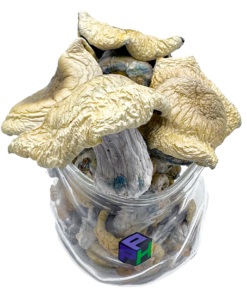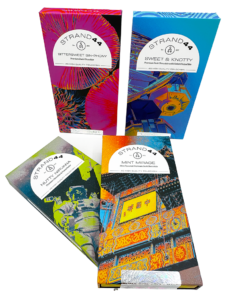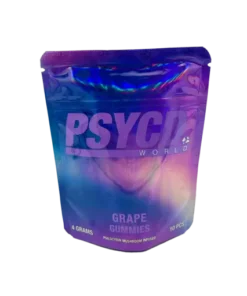Liberty Caps
$60.00 – $380.00
First named Agaricus semilanceatus by Swiss mycologist Elias Magnus Fries and known by the common name of liberty cap mushrooms or witch’s hat mushrooms, Psilocybe semilanceata (or P. semilanceata) is a psychedelic mushroom. They’re a member of the genus Psilocybe and are in the Strophariaceae family. They have the highest psilocybin content discovered so far. The cultivated fruit bodies of liberty caps have an average of 1.12% psilocybin, no psilocin, and .21% baeocystin (a naturally occurring psychoactive compound)
Dosage Guide
- Micro: 0.25 gram
- Low: 0.25 – 1 gram
- Medium: 1 – 2 gram
- Strong: 2.5 – 5 gram
- Heavy: 5 gram and upwards
Description
Liberty caps vary in color and are hygrophanous, which means they can appear to change color and transparency depending on the level of moisture in their environment. This is one reason why the mushroom’s fruit bodies may change color when moist and appear dull when dried out. Because of this, they can appear chestnut brown and dry to a light tan. The gills of a liberty cap mushroom move from a brownish color to purple-brown; spores can also be a dark purple-brown color.
Most of the time, liberty cap mushrooms are easy to identify with their bell-shaped pileus or conical cap. The genus Conocybe also has a similar cap and contains toxic compounds. Liberty cap mushrooms may also be confused with the Galerina species of mushrooms. These dangerous lookalikes contain harmful compounds that can cause severe kidney and liver damage and may be fatal if ingested.
Another identifier to look out for is an annular zone. Many psilocybes develop this ring-like band that breaks apart as the mushroom cap grows and expands.
While more studies are needed to fully understand how psychedelic mushrooms affect people, the research conducted so far is promising. Here are some of the potential benefits magic mushrooms may offer:
- Psilocybin can have anti-depressant and anti-anxiety effects that last for several months
- Evidence suggests psychedelic mushrooms may help with nicotine and alcohol dependence
- Shrooms can alleviate depression and anxiety in patients who are terminally ill
- Compounds in magic mushrooms may increase the creation of new emotion and informational pathways in the brain
It’s important to note that more studies are needed to fully understand how hallucinogenic mushrooms like liberty cap mushrooms affect mental health before we draw more definitive conclusions (3). And with more funding allocated for psilocybin research, we can expect to see exciting new discoveries soon.
Potential side effects of liberty cap mushrooms
Although magic mushrooms are generally considered safe and non-addictive, some potential side effects are associated with consuming liberty caps and other psychedelic mushrooms.
Common side effects may include nausea, disorientation, confusion, changes in visual perception, or hallucinations. You may also experience increased heart rate, anxiety, or paranoia. It’s also possible to trigger underlying mental health conditions. Keep in mind that everyone reacts differently to these mushrooms, and it’s wise to approach the consumption of liberty cap mushrooms responsibly and with caution, especially if you are new to using them.
Many variables can affect what kind of experience you’ll have, such as your weight, age, the amount you use, how much you’ve eaten that day, and your personality. In general, expect to feel the effects within 30 minutes, which can last anywhere from 3-6 hours.
How do you take liberty cap mushrooms?
Like other psilocybin-containing mushrooms, you have a few options to explore if you’re interested in consuming liberty cap mushrooms:
- Making tea: Magic mushroom tea is a popular option for enjoying liberty cap mushrooms, and one of the easiest. If you’re a regular tea drinker, you know that water temperature matters. Similar principles apply here: The hotter the water, the more the psilocybin in your mushrooms will deteriorate. Remember to allow your mushrooms to steep for about 15-20 minutes, as you’ll be less likely to experience any nausea. Feel free to add honey, lemon, or cinnamon for added flavor.
- Microdosing: Microdosing is precisely what it sounds like: taking small doses that are considerably less than those used for a full trip. A microdose is sub-perceptual, which means the subtle changes it creates in your mood or emotions aren’t consciously perceived. Once you’re familiar with microdosing and how it affects you, you can go about your day as you usually would while still experiencing the benefits of psychedelic mushrooms. You could even try the “Stamets Stack.” Developed by mycologist Paul Stamets, this microdosing protocol involves taking Lion’s Mane mushroom and niacin alongside your psychedelic mushrooms. The combination of magic mushrooms and Lion’s Mane can help create new neural pathways in the brain and repair existing neurological damage. Niacin plays a role through helping distribute both the psychedelic and functional mushrooms’ properties further into the brain, helping both work more effectively (5).
- Ingestion: Like functional mushrooms, liberty cap mushrooms can be dried and turned into a mushroom powder. You can use it to create your own custom microdose, or add it to a smoothie, tea, or other beverages and food. Start with a small dosage until you know how it will affect you.
Liberty cap mushrooms: a potent psychedelic mushroom
Liberty cap mushrooms have a rich historical significance for their medicinal properties, which continue to garner scientific interest today. And with an understanding of the proper procedures and safety measures, one can indulge in these fascinating fungi without any legal or health risks. These mushrooms’ positive benefits are plentiful, making them an exciting avenue to explore for those interested in natural remedies and ancient healing practices.
Additional information
| Donation Amount | 3.5g, 7g, 14g, 1oz |
|---|
Reviews (0)
Be the first to review “Liberty Caps” Cancel reply
You must be logged in to post a review.
This site uses Akismet to reduce spam. Learn how your comment data is processed.
Related products
Shrooms
Shrooms
Edibles
Mushroom Gummies
Edibles










Reviews
There are no reviews yet.